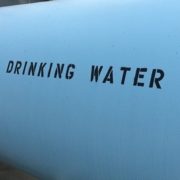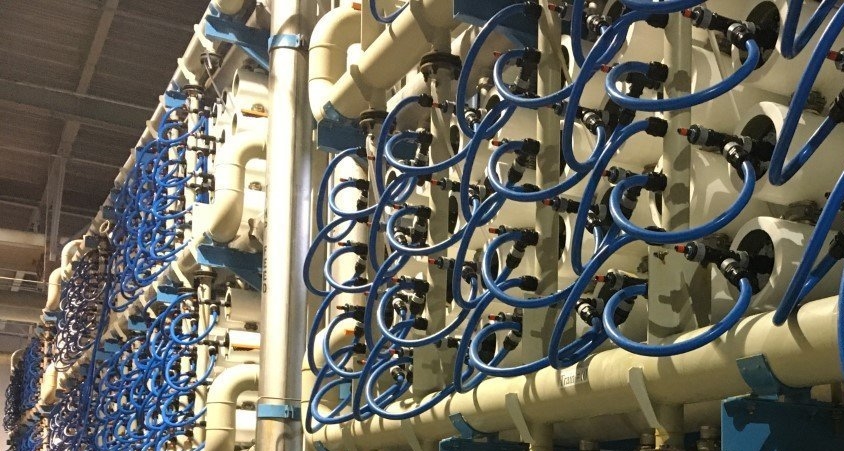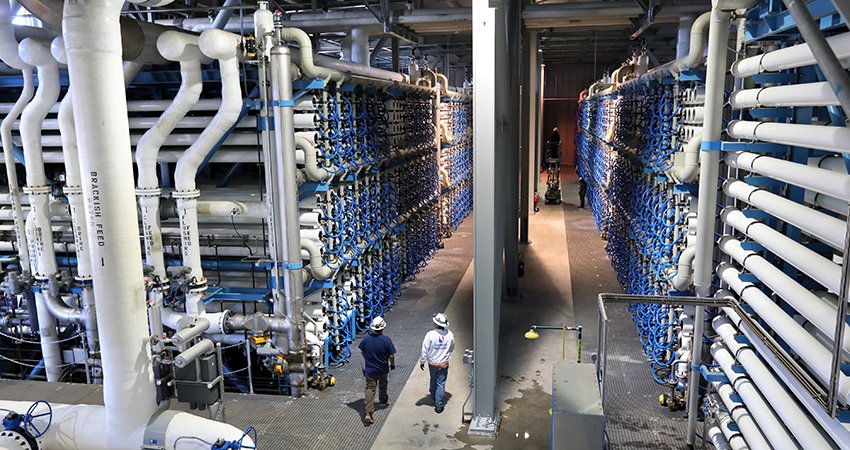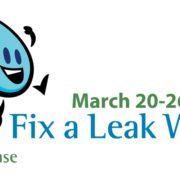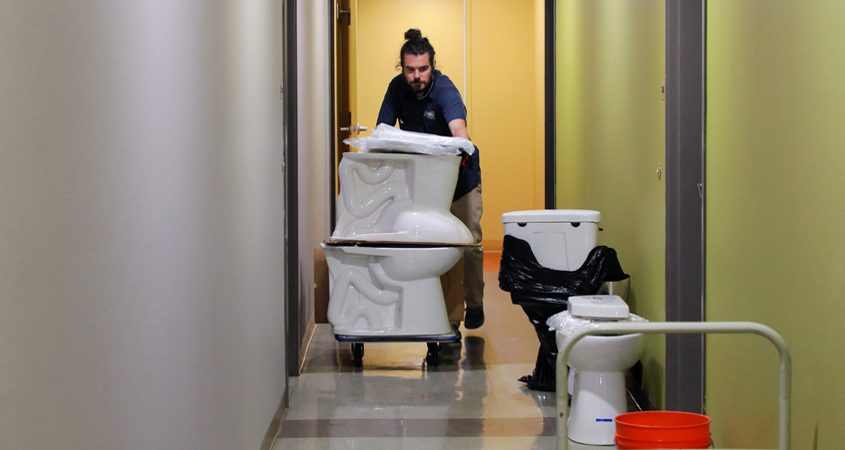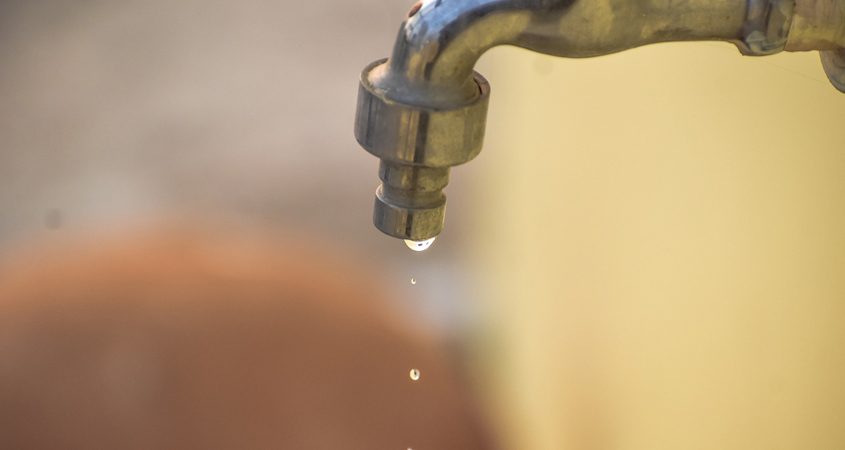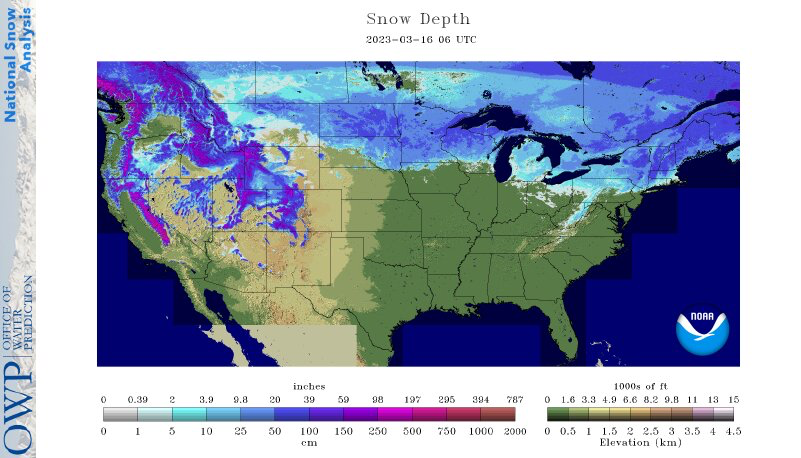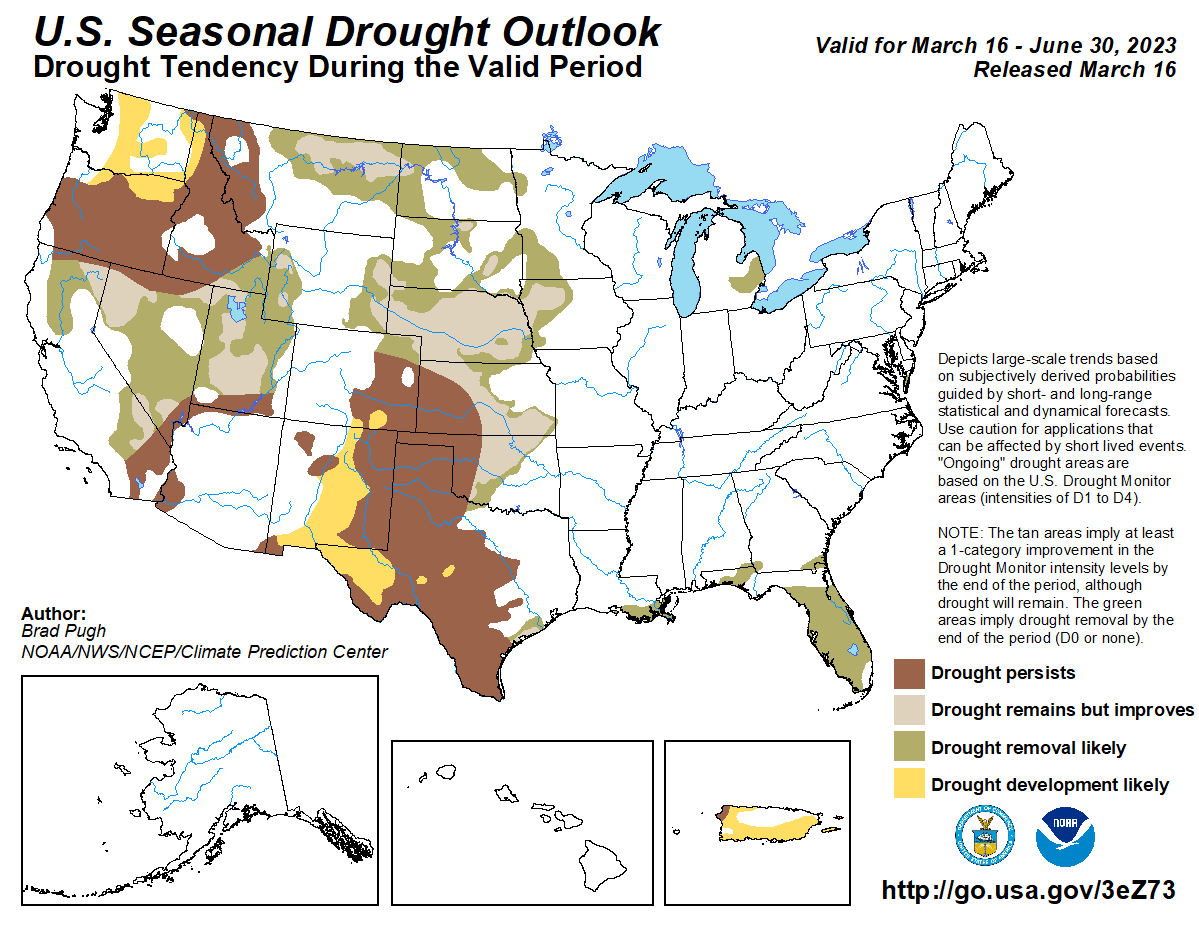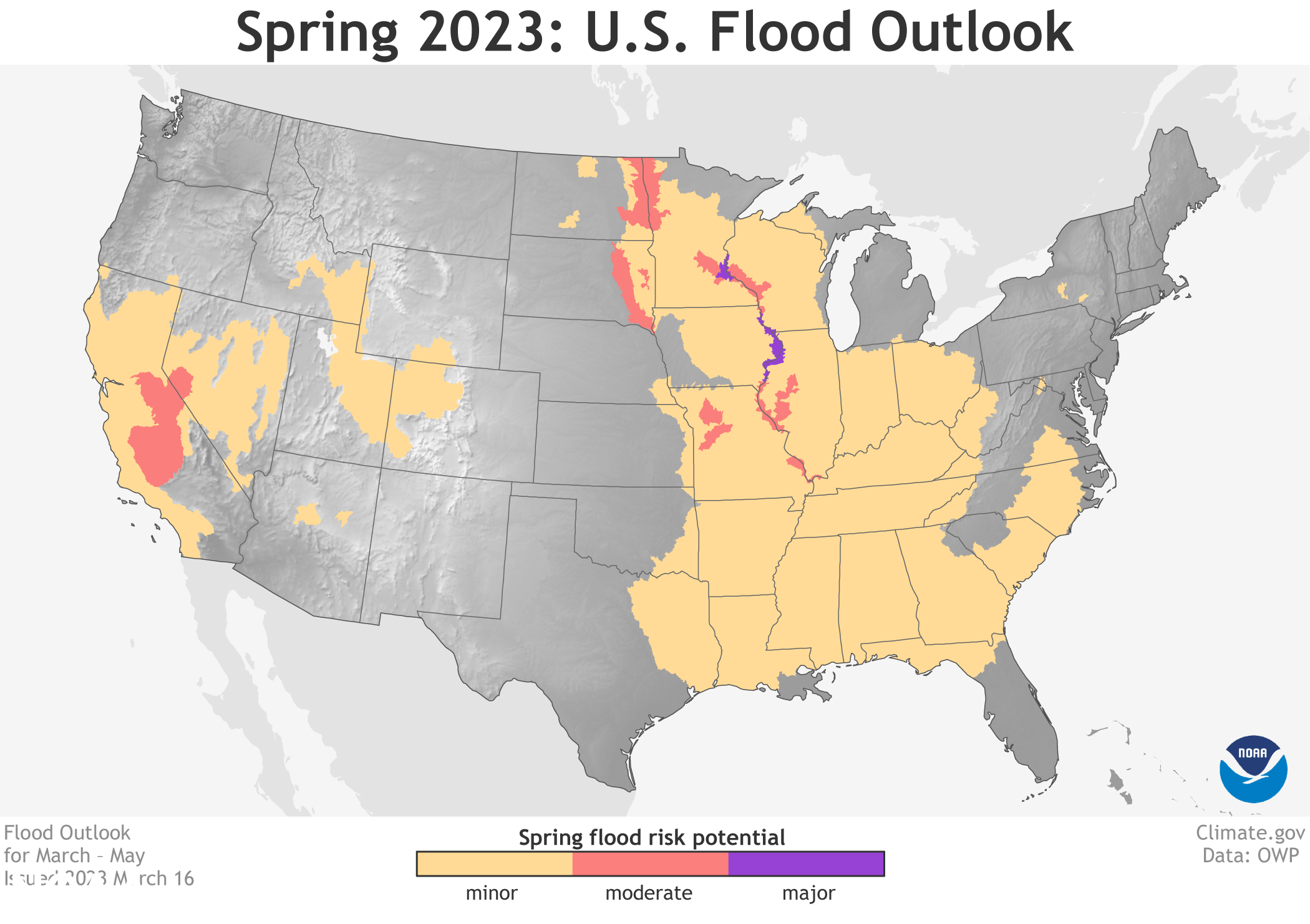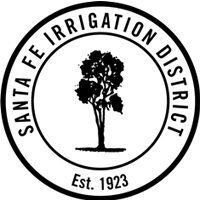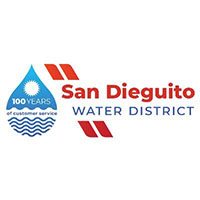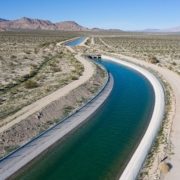The San Diego County Water Authority will host water leaders from throughout Southern California March 15 for the monthly meeting of the Colorado River Board of California. On March 14, before the formal meeting, CRB board members will tour projects in the region that promote water resiliency.
The CRB will consider the complex water supply issues facing the Southwest U.S. during its meeting. San Diego Congressman Scott Peters is also scheduled to address the CRB.
Colorado River Board of California
The tour is part of a new program implemented by CRB, under the leadership of Chair JB Hamby, Imperial Irrigation District’s representative, and Vice Chair Jim Madaffer, the Water Authority’s representative and Water Authority board member, to build greater awareness of each CRB member agency’s efforts to serve their region and manage their river supplies.
“The Colorado River Board is so important to ensuring California’s voice is heard on the river, especially during these difficult times as we work to find collaborative solutions to the river’s challenges now and into the future,” Madaffer said. “We look forward to showcasing the local supply projects, online now and planned, that create water resiliency locally, but that also reduce the demand on the river.”
Established in 1937, the CRB is a state agency tasked with protecting the interests and rights of the state and its agencies in water and power resources from the Colorado River.
The Water Authority is a member of the CRB along with IID, the Metropolitan Water District of Southern California, the Coachella Valley Water District, the Palo Verde Irrigation District, the Los Angeles Department of Water and Power, the California Department of Water Resources, and the California Department of Fish and Wildlife. CRB representatives, including two additional members from the public, are appointed by the Governor.

The facility tour and meeting is a new CRB program under the leadership of Chair JB Hamby, Imperial Irrigation District’s representative, and Vice Chair Jim Madaffer (L), the Water Authority’s representative and Water Authority board member. Photo: San Diego County Water Authority
Management of the river
The CRB represents California in discussions and negotiations with the Basin states, the U.S. Bureau of Reclamation, governmental agencies at all levels, tribes, and Mexico regarding the management of the river.
CRB members on the tour will see two local water supply projects generating water now – the Claude “Bud” Lewis Carlsbad Desalination Plant – and planned – the East County Advanced Water Purification Plant.
Seawater desalination
The seawater desalination plant, the largest in the nation, came online in 2015 and recently passed the milestone of producing more than one-billion gallons of water for the San Diego region.
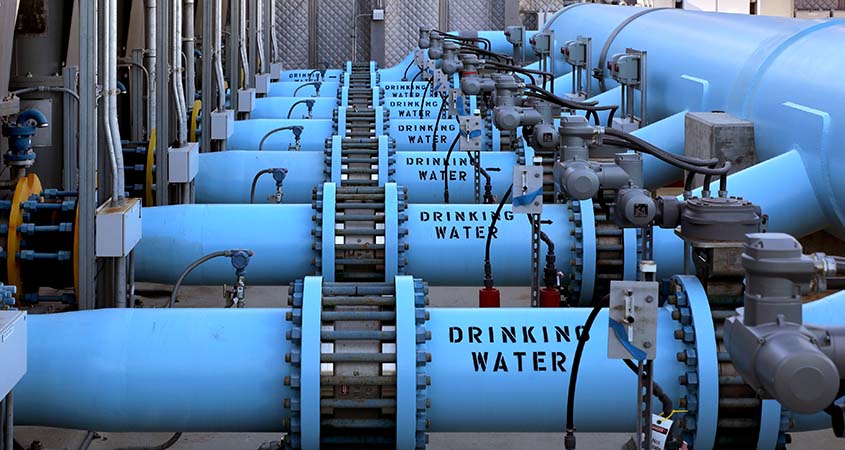
The San Diego County Water Authority added desalinated seawater to its supply portfolio in 2015 with the start of commercial operations at the nation’s largest seawater desalination plant. Photo: San Diego County Water Authority
“The desalination plant is not only important to our region, but the Water Authority believes the plant could be part of an overall long-term solution to support Lake Mead, California’s critical river reservoir, under a proposal we are considering to expand the plant,” said Madaffer.
Water purification
Now under construction, the East County Advanced Water Purification facility, or East County AWP, is a collaborative partnership between two Water Authority member agencies, the Padre Dam Municipal Water District and the Helix Water District, and the County of San Diego and City of El Cajon.
The plant is projected to generate a local, reliable and drought-proof drinking water supply utilizing state-of-the-art technology to recycle and reuse the region’s wastewater. The East County AWP is expected to produce 30% of East San Diego County’s water supply by early 2026, and is one of the innovative water purification facilities in the county either in operation or in development.
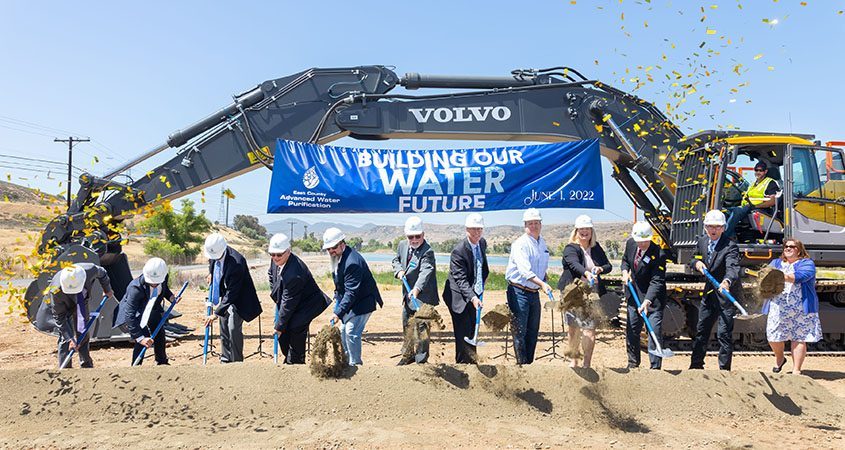
Scheduled to be operating in 2026, the East County AWP is projected to generate up to 11.5 million gallons per day of purified water— meeting approximately 30% of current drinking water demands for East San Diego County residents and businesses. Photo: San Diego County Water Authority
Following the facility tours on March 14, the CRB will hold its monthly meeting March 15 at the Water Authority’s Kearny Mesa headquarters in San Diego. The meeting is scheduled to start at 10 a.m. and is open to the public.
(Editor’s note: The Helix Water District and Padre Dam Municipal Water District, are two of the San Diego County Water Authority’s 24 member agencies that deliver water across the San Diego County region.)


